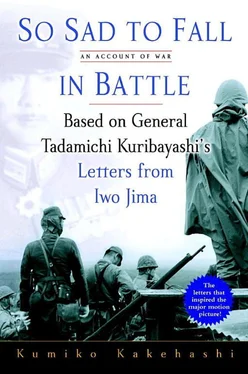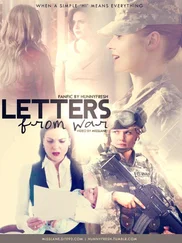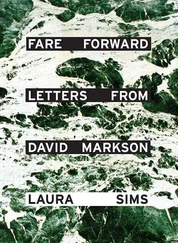They shake one another’s hands, timidly at first, then more forcefully. Weeping, they hug one another and start to make conversation through sign language and gestures. “I still have a bullet in my leg,” says one. “I’ll betcha I’m the guy who fired it,” jokes another. “I had terrible burns on my face and you Americans saved me. My nose is ‘Made in the U.S.A,’” says a Japanese veteran with a grin. Now even the families of the dead have clasped one another’s hands.
Not everyone who took part in the reunion did so willingly. The video introduces us to Ed Moranick, who participated in the landing operation as a marine in the 4th Division. There’s a scene on the plane heading for Iwo Jima where he says, “This is no pleasure trip for me. When I think how much my wife has suffered…. To be honest, the thought of having a reunion with Japanese veterans really depresses me.”
On Iwo Jima, Moranick was struck in the face by a shell, and his appearance was completely transformed. In a portrait photograph taken just after the war, his nose is almost completely gone, while his eyes and mouth are significantly deformed. After the war, he needed twenty-two reconstructive surgeries before he could return to normal life.
On the return flight from Iwo Jima, the expression on Moranick’s face is different. “Forty years ago I came to this island to kill ‘Japs’; I didn’t even think of them as ‘people,’” he says. “But now I’m sorry that we slaughtered each other like that. Really and truly sorry.”
In 1984, a ceremony was also held to commemorate the fortieth anniversary of the Normandy landings, but only the victorious nations—the United States, Great Britain, France, and so on—took part, and the purpose of the ceremony was to commemorate their victory. In this respect, the scenes played out on Iwo Jima were highly unusual.
A joint Japanese-American commemoration ceremony is now held every year. Why is it only at Iwo Jima that men who previously devoted themselves to killing one another have managed to meet and achieve reconciliation like this? Is it because they fought such a savage, all-out battle at such close quarters that now, with the passage of time, they are able to forgive and accept one another? This, I suspect, is something only the people who fought there can really understand.
A memorial was erected on the south beach where the 1985 ceremony was held. It bears the following inscription in both English and Japanese.
ON THE 40TH ANNIVERSARY OF THE BATTLE OF IWO JIMA, AMERICAN AND JAPANESE VETERANS MET AGAIN ON THESE SAME SANDS, THIS TIME IN PEACE AND FRIENDSHIP.
WE COMMEMORATE OUR COMRADES, LIVING AND DEAD, WHO FOUGHT HERE WITH BRAVERY AND HONOR, AND WE PRAY TOGETHER THAT OUR SACRIFICES ON IWO JIMA WILL ALWAYS BE REMEMBERED AND NEVER BE REPEATED.
FEBRUARY 19, 1985
3RD, 4TH, 5TH DIVISION ASSOCIATIONS: USMC
AND
THE ASSOCIATION OF IWO JIMA
CHAPTER EIGHT
THE SOLDIERS’ LETTERS
—
KURIBAYASHI ENCOURAGED HIS MEN TO WRITE LETTERS AND SEND money home to their families, so in the months leading up to the American invasion, they diligently wrote home during breaks in their maneuvers and the building of their defensive installations. Many of the families carefully preserve these letters as substitutes for the relics of the dead, as the bones and personal effects of few of the fallen were sent back from Iwo Jima.
The soldiers, for their part, eagerly looked forward to letters from their families. It was the Kisarazu 1023 Flying Corps that exploited the intervals between air raids to bring the letters that served as a link between the hearts of the soldiers and their families. There was always a bundle of letters on these planes, crammed with crew, spare parts, medical supplies and drinking water. The journey was dangerous for transport planes as they were not armed, but the letters and photographs that their families sent were a major source of spiritual strength for the soldiers.
I received the long-awaited photograph of Masayuki safely. I got the letter in a bundle of two or three, but opened this one the minute I saw that the sender’s name was Masayuki. He’s grown so much. You’ve done a great job to raise him so plump and healthy.
Thank you. Thank you so much. Keep good care of him from now on, too.
I was so pleased at how cute and clever he looks that I took the photo round to my comrades at the HQ and told them: “Hey, take a look at this picture of my kid.” Perhaps they were just being nice, but they said he looked just like me. I quickly tracked down some cardboard and rigged a handy little photo stand, and then I put the picture on the shelf where I look at it every day. I’ll probably bore a hole through poor Masayuki any minute!
This is a letter that Kobayashi Issaku of the Second Independent Machine Gun Battalion wrote to his wife. The tenth letter he had sent from the front, it reached her on November 5, 1944.
Masayuki was Kobayashi’s first son, who had been born after he had already gone to the front. Ultimately, Kobayashi was to die without ever seeing his son’s face outside this photograph. Of the 228 men in his battalion, only one—a medical worker whose movements were different from the rest of the group—survived.
I got the picture with Masayuki and Kuniko snuggling up to each other on the sixteenth. He’s grown so big! I literally gasped when I opened the letter and saw the picture. He’s so cute it’s wicked. The NCOs and my friends tell me that if a father and his child resemble one another, then they’ll never have a falling out. I like the last photo you sent me when he’s smiling—it was sweet—but he looks rather clever in this one with his mouth clamped shut, too.
If you’re not going to make a fuss about children as perfect and as cute as these, then there are no children on this earth who deserve to be spoiled! And you can tell everyone I said that. I made a bag from a scrap of tent material and carry the picture around with me all the time in my pocket. From time to time I take it out and talk to Masayuki.
It was February 18, 1945, when the family received this final postcard. The next day, the Americans landed.
There were many other soldiers like Kobayashi who went into battle carrying a treasured family photograph. Andô Tomiji of the Takano Kensetsu construction company collected the bones and personal effects of the dead on Iwo Jima in 1951 and 1952. In his book Aa Iô-Jima ( Ah, Iwo Jima ), Andô described his experiences discovering bodies that had rotted away with letters and photographs on them.
In a cave near Tenzan in the north, I found a body. He was just a skeleton with a photograph of his family and a letter pushed into his breast pocket. There were three photographs inside the letter. The blood had soaked into them, but I could still make out a faint image of his mother and brothers.
The corpse was that of a special officer cadet who had graduated from the Utsunomiya Flight School, and the letter was from his mother. Andô continues: “It was a sweet letter full of concern for her son. I am sure the cadet cried out for the mother he saw in his dreams when he dozed off in his dismal defense post.”
At the time, special officer cadets could volunteer from the age of fifteen and would be sent off to the front after a brief period of training. This particular cadet was either sixteen or seventeen.
The Japanese soldiers who fought on Iwo Jima came from a broad age range. As the war approached its end, it was getting difficult to find young and healthy men to conscript. As a result, many of the soldiers were middle-aged and had wives and children. Andô also found bodies that were clutching photographs of children.
Читать дальше












